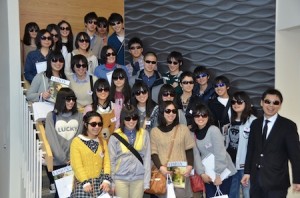Special to WorldTribune.com
By Donald Kirk, East-Asia-Intel.com
The Japanese don’t take kindly to people telling them what they should and shouldn’t teach.
“As a sovereign nation, any country should be responsible for what to teach and how to teach it,” an experienced teacher in Japan told me when asked about this textbook controversy that so upsets Korea and China. “At the same time, teachers should convey all the facts on what is going on around neighboring countries. What is important is to foster critical ways of thinking with objectivity.”

That’s quite difficult considering the constraints imposed on the Japanese school system by new guidelines on how to inculcate a basic understanding of the territorial limits of Japanese power. Lest impressionable young minds grow up unaware of what Japanese authorities say is rightly Japanese, they’re going to learn with extra clarity that Japan is the legitimate ruler not only of the Senkaku Islands in the East China Sea but also of Takeshima and the Northern Territories north of the large “mainland” Japanese island, Hokkaido.
Whether Japanese students will be told that Chinese refer to the Senkakus as Diaoyu and Koreans say Takeshima is Dokdo and the sea around it is the East Sea, not the Sea of Japan, is not clear. And while the Kurils may be the name for the islands off the top of Hokkaido, students will be taught to refer to them as the “Northern Territories.”
As far as the Japanese are concerned, all these island groupings, whoever really controls them, are just as Japanese as, well, the rest of Japan. More importantly, they symbolize the historic and current struggle for control of Northeast Asia. That’s why the government of Prime Minister Shinzo Abe thinks it’s a good idea that young Japanese grasp their real significance.
As tensions rise around the region, however, the youngsters will probably not learn from classroom exercises and schoolbooks why all the regional powers near Japan make such a fuss about a directive reinforcing well-known Japanese claims. The teacher might not recognize that issuance of strong new guidelines marks another milestone in a campaign to make sure of common purpose and national unity. China might call the guidelines “fact-twisting manuals,” and the Chinese and Koreans might lodge protests, but the teacher doubted if the Japanese cared.
Differences in attitudes and responses on the latest guidelines from Japan’s powerful education ministry rank among the bitterest of all the controversies roiling Japan’s relations with China, Korea and Russia over the years. While China wages a campaign of rhetoric and intimidation over the Senkakus, South Korea demands that Japan “apologize” for forcing “comfort women” to serve Japanese soldiers in World War II and makes Dokdo a reminder of colonial rule over Korea up to the Japanese surrender.
Within Japan, it’s as though the Abe government were preparing the Japanese for much more stringent controls than now exercised over a society that remains essentially homogeneous and inward-looking despite seemingly wide political differences. Whether Abe is as rightist as some of his critics believe, he is a nationalist at the head of the Liberal Democratic Party, the conservative grouping that regained power in 2012 after the failure of the slightly liberal Democratic Party of Japan to force removal of American bases from Okinawa as promised after taking over from the LDP in 2009.
The guidelines are part of a continuum that also includes passage by Japan’s parliament of a new law cracking down on anyone found to have leaked classified information. The law seems to have been in response to the implications not only of domestic criticism but also of revelations of official secrets that might not really be classified as secret in other countries.
One primary goal is to make sure that the Japanese are unified in their response to China’s strident campaign for the Senkakus, including the alarming claim that China owns the air space over and around the islands. How can you fight the Chinese, the Japanese are asking, if anyone can blurt out what we’re doing?
Tough though such measures might appear, however, Abe may not be as tough as his words imply. He doesn’t seem much inclined actually to go to war – and faces deep opposition to doing away with article nine of Japan’s post-war constitution banning Japan from sending forces overseas.
Might future generations of Japanese, educated to believe in the need to hold and defend Japan’s island frontiers, want to wage more than a war of words? That’s a question that many Japanese are asking. For now, however, keeping the peace seems to take precedent.
“Schools are making lots of efforts in peace study,” the teacher reminds me. “No one wants wars” — though “present relations between Japan and China or South Korea are far from ideal.”
Columnist Donald Kirk has spent years reporting and writing from both Japan and Korea. He’s at kirkdon@yahoo.com.

You must be logged in to post a comment Login